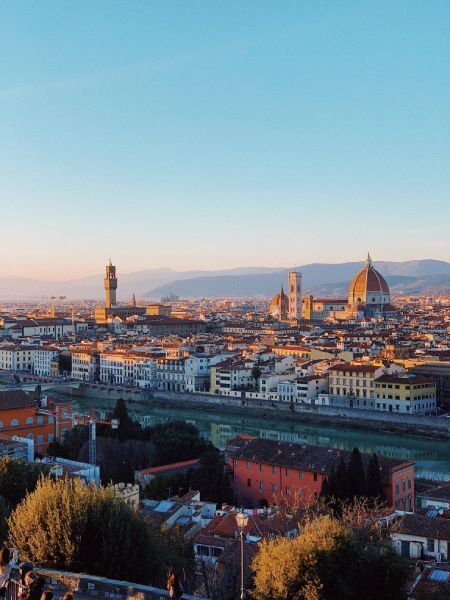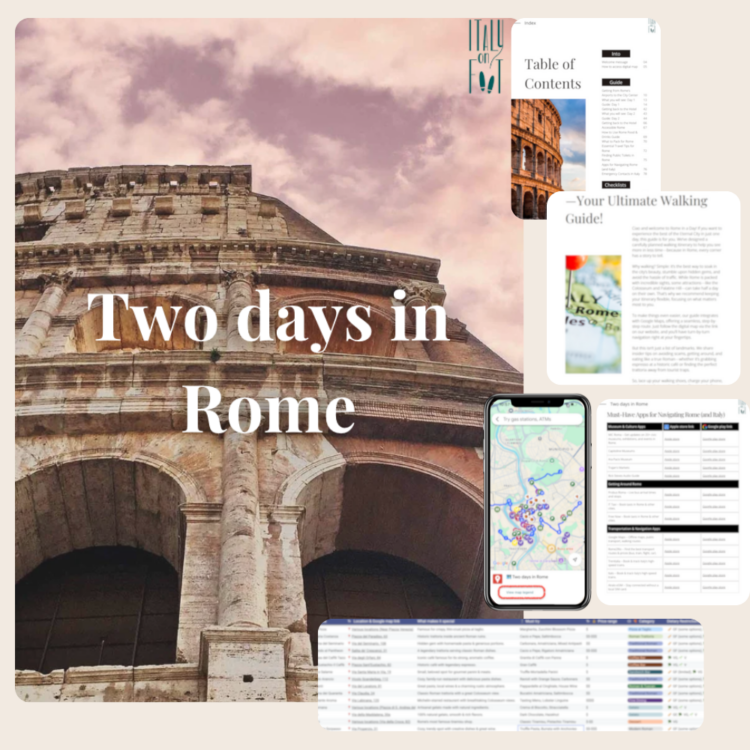Planning a trip to Italy and wondering what the weather will be like during your visit? Understanding the weather patterns across the months can make a big difference in your travel experience. As someone who has lived here for years, I can tell you that Italy’s weather is as diverse as its cuisine. Let’s dive into how the weather changes month by month, so you can make the most of your journey.

January: Winter Magic
January is one of the coldest months in Italy, but that doesn’t mean it’s not worth visiting. The northern regions, especially places like Milan and Turin, can get quite chilly, with temperatures often dipping below freezing. Snow is common in the Alps and Apennines, making it a paradise for ski enthusiasts. Central Italy, including Rome and Florence, experiences milder temperatures, usually hovering around 5-10°C (41-50°F). Down south, in cities like Naples and Palermo, you’ll find the weather to be relatively warmer, averaging around 10-15°C (50-59°F). It’s a great time to enjoy fewer tourists and some cozy indoor activities, like visiting museums or enjoying hearty local dishes.
February: A Hint of Spring
February still feels like winter in most parts of the country, but there’s a noticeable shift as spring starts to tease its arrival. In the northern regions, snow remains a common sight, especially in mountainous areas. Milan and Venice experience temperatures similar to January, but with a bit more sunshine. Central Italy starts to see a slight increase in temperatures, making it more comfortable for outdoor activities. Rome, for instance, can see daytime highs of around 12°C (54°F). Down south, places like Sicily and Sardinia begin to warm up, offering a pleasant escape from the colder north. The famous Carnival of Venice usually takes place in February, adding a festive vibe to the winter gloom.
March: Spring Awakens
March marks the beginning of spring in Italy, and the transformation is beautiful. Northern Italy starts shedding its winter coat, although it can still be quite chilly early in the month. Daytime temperatures in cities like Milan and Venice usually range between 10-15°C (50-59°F). Central Italy, including Rome and Florence, sees a more noticeable change, with temperatures climbing to a comfortable 15°C (59°F) or higher. Southern Italy enjoys even warmer weather, with places like Naples and Palermo reaching around 18°C (64°F). March is a wonderful time to explore the countryside and witness the blooming flowers. If you’re planning a visit, don’t forget to check out some Italy on foot travel tips to make the most of your trip.
April: Full Bloom
April is one of the best months to visit Italy. The weather is generally pleasant across the country, and the landscapes are in full bloom. Northern regions experience mild temperatures, averaging around 15-20°C (59-68°F). Central Italy, including Rome and Florence, enjoys warm days and cool nights, with temperatures often reaching the mid-20s Celsius (77°F). Southern Italy starts to get quite warm, with temperatures in places like Sicily and Sardinia often hitting 25°C (77°F) or higher. April is ideal for outdoor activities, sightseeing, and enjoying the beautiful gardens and parks. It’s also the start of the tourist season, so expect to see more visitors around popular attractions.
May: Pre-Summer Vibes
May is another fantastic month to explore Italy, as the weather continues to improve and the summer crowds haven’t yet arrived. In the north, temperatures are comfortably warm, ranging from 20-25°C (68-77°F). Central Italy sees similar conditions, with cities like Rome and Florence basking in the sunshine. Southern Italy gets even warmer, with temperatures often reaching 28°C (82°F) or higher. The beaches start to become more inviting, and you’ll find locals and tourists alike enjoying the coastal areas. May is perfect for outdoor festivals, wine tours, and exploring the countryside.
June: Summer Kicks In
June marks the beginning of summer in Italy, and the weather is generally warm and sunny across the country. Northern Italy experiences temperatures around 25-30°C (77-86°F), making it great for exploring cities and enjoying outdoor activities. Central Italy gets a bit hotter, with temperatures often exceeding 30°C (86°F). Southern Italy sees the highest temperatures, with places like Sicily and Sardinia frequently reaching 35°C (95°F) or higher. June is a popular month for tourists, so expect more crowds at major attractions and beaches. It’s also a great time for festivals, outdoor concerts, and enjoying the vibrant nightlife.
July: Peak Summer
July is one of the hottest months in Italy, with temperatures soaring across the country. Northern Italy can see highs of 30-35°C (86-95°F), while central regions like Rome and Florence often experience temperatures above 35°C (95°F). Southern Italy is scorching, with temperatures frequently reaching 40°C (104°F) or higher. The heat can be intense, so it’s important to stay hydrated and take breaks in the shade. Despite the heat, July is a busy month for tourism, with many people flocking to the beaches and popular cities. It’s a great time to enjoy water activities, beach parties, and summer festivals.
August: Sun and Fun
August is the peak of summer in Italy, and the weather is hot and sunny across the country. Northern Italy experiences temperatures similar to July, with highs of 30-35°C (86-95°F). Central Italy also sees scorching temperatures, often exceeding 35°C (95°F). Southern Italy remains the hottest, with temperatures frequently reaching 40°C (104°F) or higher. August is a popular month for vacations, and many Italians take their annual holidays during this time. This means that some local businesses may be closed, but tourist areas are bustling with activity. It’s a great time to enjoy beach holidays, outdoor dining, and summer events.
September: A Gentle Cool Down
September brings a welcome relief from the intense summer heat, making it one of the best months to visit Italy. Northern Italy experiences mild and pleasant temperatures, usually ranging from 20-25°C (68-77°F). Central Italy also enjoys comfortable weather, with daytime highs around 25°C (77°F). Southern Italy remains warm, but the temperatures start to drop, averaging around 30°C (86°F). September is a perfect time for sightseeing, as the summer crowds have thinned out, and the weather is ideal for exploring both cities and countryside. It’s also the start of the grape harvest season, so wine lovers will have plenty to celebrate.
October: Autumn Charm
October is a beautiful month to experience Italy, as the autumn colors begin to paint the landscapes. Northern Italy starts to cool down, with temperatures ranging from 15-20°C (59-68°F). Central Italy enjoys mild weather, with highs around 20-25°C (68-77°F). Southern Italy remains relatively warm, with temperatures in the mid-20s Celsius (77°F). October is ideal for exploring the countryside, visiting vineyards, and enjoying the fall foliage. It’s also a great time for cultural events, food festivals, and experiencing the local traditions. The weather is generally pleasant, making it comfortable for both outdoor and indoor activities.
November: Crisp and Cool
November brings cooler weather to Italy, but it’s still a lovely time to visit. Northern Italy experiences chilly temperatures, often ranging from 5-10°C (41-50°F). Central Italy starts to feel the autumn crispness, with temperatures around 10-15°C (50-59°F). Southern Italy remains milder, with temperatures in the mid-teens Celsius (59°F). November is a quieter month for tourism, making it a good time to explore popular attractions without the crowds. It’s also a great month for enjoying seasonal foods, visiting museums, and experiencing the local culture. The weather is perfect for cozying up with a warm drink and enjoying the slower pace of life.
December: Festive Spirit
December is a magical time to visit Italy, as the holiday spirit fills the air. Northern Italy can get quite cold, with temperatures often dipping below freezing. Central Italy experiences milder weather, with temperatures around 5-10°C (41-50°F). Southern Italy remains relatively warmer, with temperatures in the low-teens Celsius (50°F). December is a wonderful time to experience the festive decorations, Christmas markets, and holiday traditions. Cities like Rome, Florence, and Venice are beautifully adorned with lights and decorations, creating a charming atmosphere. It’s a great time for enjoying seasonal foods, shopping for unique gifts, and immersing yourself in the holiday cheer.



